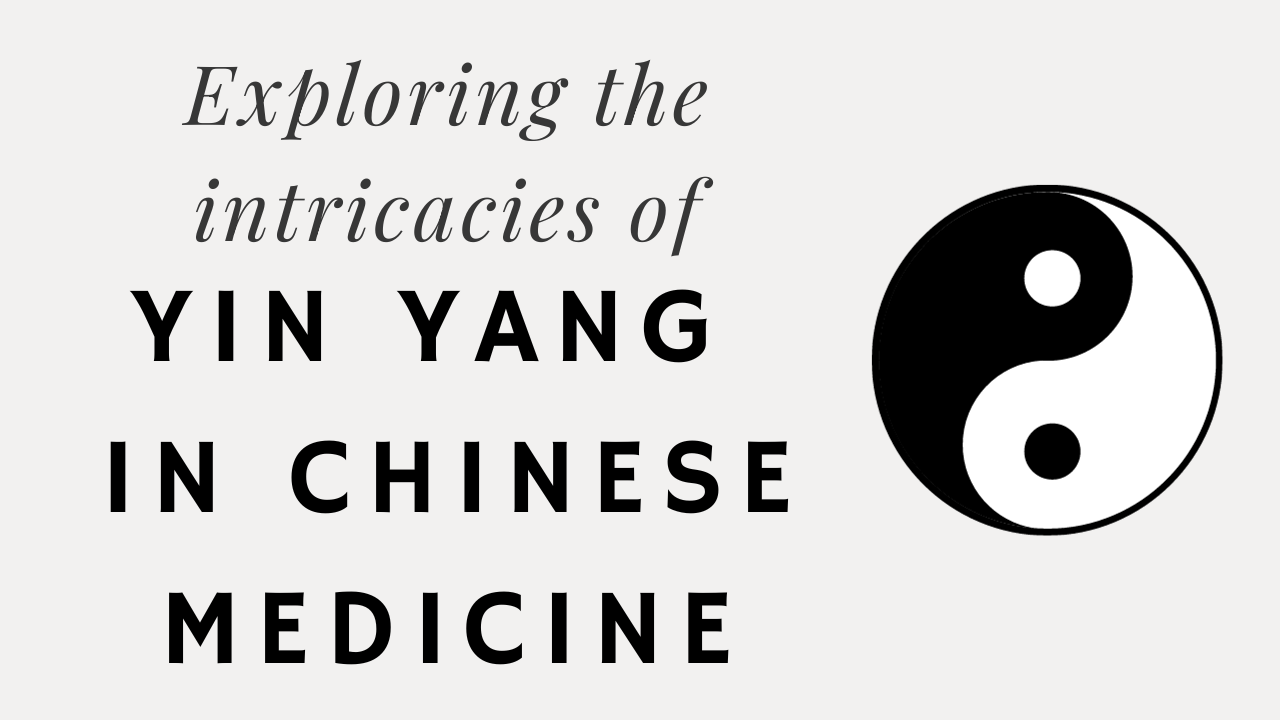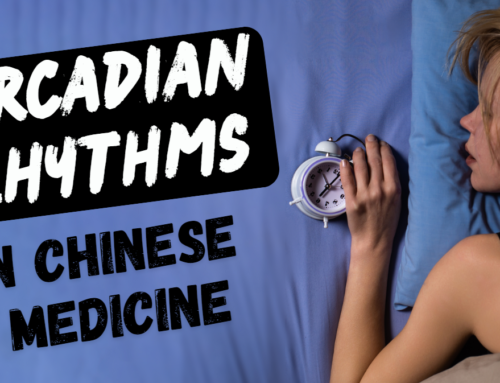Listen on Amazon MusicListen on SpotifyListen on Apple Podcasts
🔗Links mentioned in this episode:
Chinese Medicine Made Easy Book
TCM Foundation & Diagnosis Videos
Watch my full video on the Yin Yang Theory in Chinese Medicine
Show Notes
Today I am going to dive into the Yin Yang theory. Specifically, I will look at the relationship, symbol, the Chinese characters. Understanding the relationship between Yin & Yang is important. It applies to everything! But also I will share how to differentiate symptoms between Yin Excess and Yang deficiency, and Yang Excess & Yin.
The Characters ☯️
Yin and Yang are actually Chinese words that come from characters and are part of a larger concept or theory that can’t be translated. The characters themselves depict an image of a mountain with a shady and sunny side. This represents the relationship of light and dark or the shade and sunny parts of Yin and Yang.
The Yin Yang Symbol + its Relationship 🌌
The symbol is everywhere, but do people actually understand the full meaning behind it?
It represents the relationship balance of Yin and Yang in the universe and shows that they can’t exist without each other. The Yin Yang Theory has been around since 700 BC. It is part of the I Ching book. This booked talks about Yin and Yang specifically.
The Yin and Yang symbol represents a theory that is deeply ingrained in Chinese philosophy and culture. It is based on the concept of duality. The idea is that there are two opposing forces in the universe that are interdependent and complementary.
The symbol’s relationship is a visual representation of this theory 🌱
It consists of a circle divided into two halves. One black and one white, with a curved line separating the two halves. Within each half, there is a small circle of the opposite colour. This indicates that within each opposing force, there is a seed of its opposite.
The black half of the symbol represents Yin, which is associated with dark, femininity, earth, water, and passivity. The white half represents Yang, which is associated with light, masculinity, heaven, fire, and activity.
Additionally, the curved line between the two halves represents the constant flow and balance of these two opposing forces. It suggests that they are not static, but rather in a state of constant flux. One forces domination of the other at different times.
The goal is not to eliminate one force in favor of the other, but to find harmony and balance between the two. This is why the small circles of the opposite color are included in each half of the symbol. It is to remind us that we must recognize and honor the presence of both forces in our lives.
Nothing is Yin or Yang, everything pertains to Yin or Yang in relation to something else 🔒
They represent the balance of opposing forces in the universe. It shows that there is always potential for change and balance, and that the two sides are interconnected and interdependent. Understanding this concept is fundamental to the practice of Chinese medicine and can help us achieve optimal health and wellness.
Example
- Water (heavier & cooler) is Yin compared to steam, which would be Yang (warmer, lighter). But when compared to ice, Water is now Yang (flowing) and ice is now Yin (dense & cold).
- My dog is so Yang. (Full of energy during the day, always hot, looking to cool down, and loving people’s attention). And my cat was so Yin. (Up at night, loving to sleep in the sun, always cold. Liked to be left alone and would show you quickly if you bothered him!) 😩
2- They are opposite
- This concept refers to relative versus absolute opposition. The temperature in Paris is Yin (cooler) compared to the one in Madrid (warmer), which is Yang. But Madrid’s temperature is cooler (Yin) compared to Cairo (hotter), which would then be Yang.
- It’s all about looking at two different entities and comparing them to each other to determine their Yin or Yang nature.
3- Inter-dependence
One cannot exist without the other. The day cannot exist without night and vice versa, nor contraction without expansion, nor matter without energy.
Winter & Summer, expansion & contraction, energy & matter.
This interdependence can be observed in different parts of the world. For example, in Alaska where they experience 24 hours of daylight during the summer months. During the winter months there is only darkness. Despite the differences in the seasons, the balance between Yin and Yang remains the same.
4- Mutual consumption
It’s a quantitative change (continuous adjustment of the relative level of Yin & Yang).
When seasons change, winter (Yin) becomes warmer with spring, which becomes summer (Yang). Then the cooler weather returns with fall, which becomes cold winter again.
5- Inter-transformation
It’s a qualitative change.
Certain conditions are required in order for the transformation to occur. An egg needs the right amount of heat to hatch. A happy drinking night can transform into a miserable hangover the next morning.
The yin yang symbol also represents movement and change. It shows that yin can transform into yang and yang can transform into yin. When one side becomes excessive, it will naturally transform into its opposite in order to restore balance.
6- They contain each other’s seed
Which means nothing is totally Yin and nothing is totally Yang.
Within the day (Yang) there is shade (Yin); and at night, the moonlight brings brightness (Yang) to the dark (Yin).
In conclusion, the symbol shows that there is always a little bit of yin within yang. And a little bit of yang within yin. This means that there is always potential for change and balance. The symbol also shows that the two sides are interconnected and interdependent, and they cannot exist without each other. In a whole, a relationship.
The Theory’s Relationship with Nature 🏞️
As for the association of Yin with the moon and Yang with the sun, it’s believed that ancient Chinese philosophers and thinkers observed the cycles of the moon and the sun and their effects on the natural world. They noticed that the moon had a more calming and cooling effect. The sun had a more warming and active effect. This observation led to the association of Yin with the moon and Yang with the sun.
Yin represents the structure, while Yang represents movement and energy. The physiology of the body is seen as more Yang compared to the anatomy, which is more Yin. In turn, the digestive system is an example of physiology, while the organs are an example of anatomy. The two are interdependent and cannot exist without each other.
In TCM, the concept of expansion and contraction is used to describe the opposing forces. Anything that expands or grows is considered Yang, while anything that contracts or moves inward is considered Yin. The skin and the surface of the body are considered more Yang. While the interior of the body is considered more Yin.
Our back is considered more Yang while the front is more Yin. As a whole, the head is considered more Yang than the rest of the body. Because it is closer to the sun and upward. Of course, the highest point of the body is considered the most Yang point. The lowest point is considered the most Yin point.
The sympathetic central nervous system is seen as more Yang, representing action and activity. On the other hand, the parasympathetic nervous system is seen as more Yin, representing rest and recovery.
Conclusion
The Yin and Yang relationship are fundamental concepts in Traditional Chinese Medicine (TCM). This describes the complementary and opposing forces in the universe and in the human body. In short, Yin represents the feminine, passive, and cooling aspects, while Yang represents the masculine, active, and warming aspects.
With TCM, balance is crucial for good health. Any imbalance between the two can result in illness or disease. Therefore, it’s important to understand this relationship and how they affect the body.
Disclaimer
The Acupro Show podcast and material shared through Acupro Academy is a subdivision of Natural Health Sense Incorporated. Designed solely for educational and entertainment purposes. The utilization of information from this podcast or any associated material is at the user’s discretion and risk. This content is not meant to replace the guidance of an acupuncturist. Nor Chinese medicine doctor, medical doctor, physician, or any qualified professional. It is not a substitute for proper diagnosis or treatment. Users are strongly advised not to ignore or postpone seeking medical advice for any existing medical condition with their healthcare professional. Regarding any health concerns.
Need the podcast transcript? Click here!







Leave A Comment